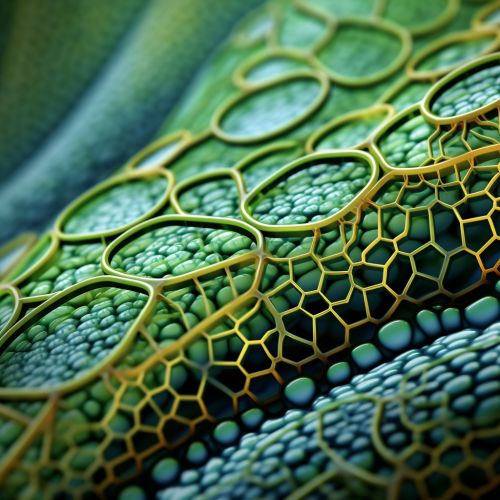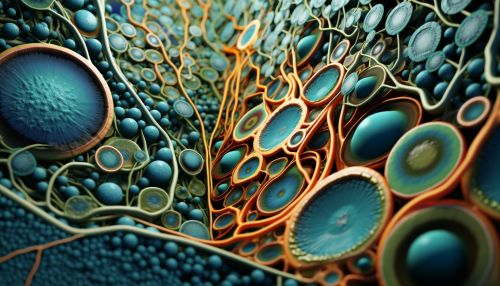Cell wall
Introduction
The cell wall is a structural layer surrounding some types of cells, situated outside the cell membrane. It provides the cell with both structural support and protection, and also acts as a filtering mechanism. Cell walls are present in most prokaryotes, in algae, plants and fungi but rarely in other eukaryotes including animals. A major function of the cell wall is to act as a pressure vessel, preventing over-expansion of the cell when water enters.


Composition
Cell walls are made of various types of polysaccharides and proteins. The composition of cell walls varies between species and may depend on cell type and developmental stage. The primary cell wall of land plants is composed of the polysaccharides cellulose, hemicellulose, and pectin. Often, other polymers such as lignin, suberin or cutin are anchored to or embedded in plant cell walls.
Function
Cell walls serve similar purposes in those organisms that possess them. They provide a rigid support framework, protect the cell from mechanical damage, and mediate cellular signaling. Cell walls also limit the entry of large molecules that may be toxic to the cell. They further permit the creation of stable osmotic environments by preventing osmotic lysis and thus the cells of plants, fungi, and most bacteria are contained within a cell wall.
Evolution
The evolution of cell walls has been a complex process because of the variety of their composition and function. In general, cell walls evolved as a mechanism for the cell to withstand the effects of osmotic pressure. The eukaryotic cell wall has evolved on different occasions by parallel evolution for their roles in protecting against parasites, maintaining the shape of the cell, and allowing free passage of certain substances.
